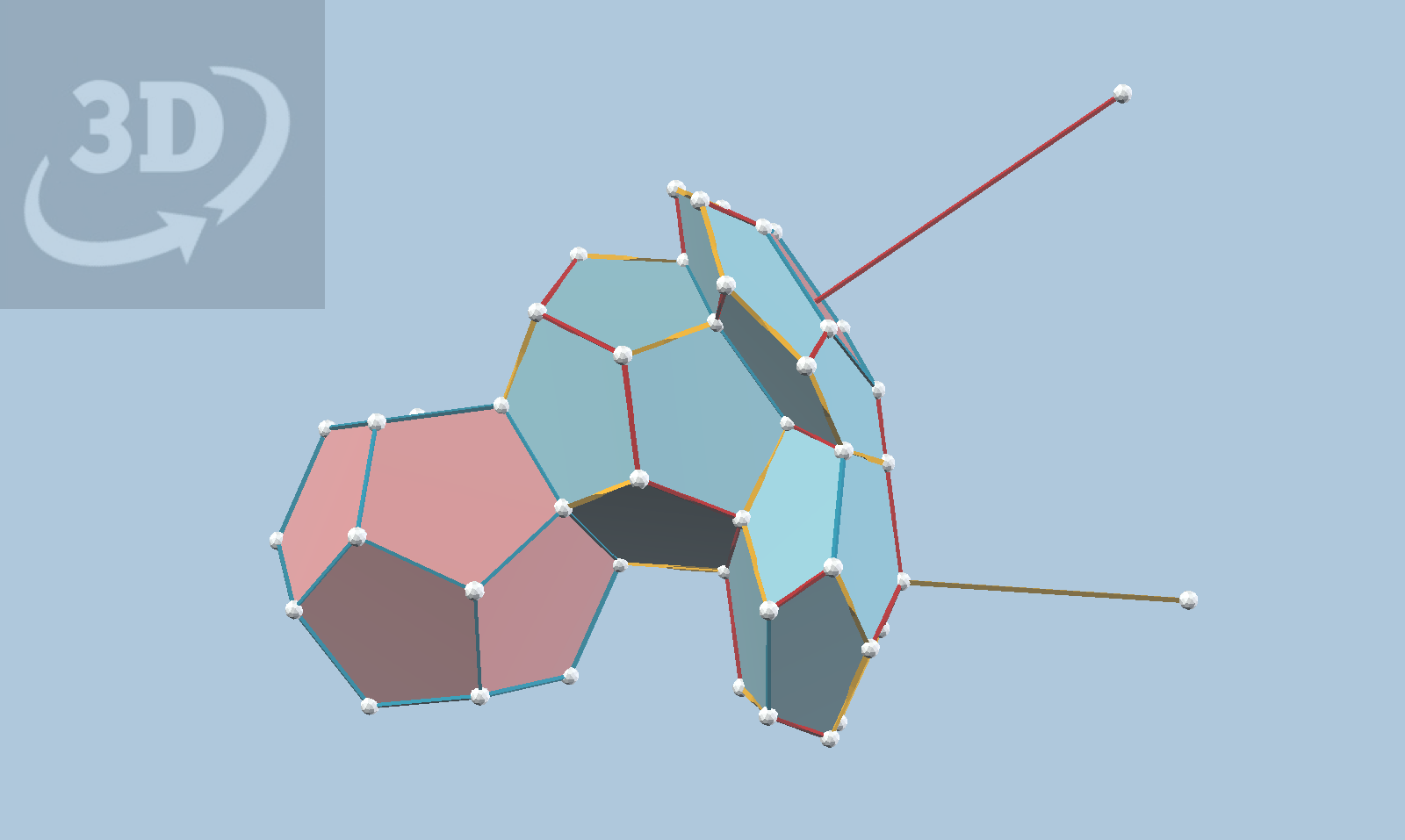Anyone who has built a 120-cell (hyper-dodecahedron) model with Zome knows that it contains several kinds of "squashed" dodecahedra, in addition on one regular blue dodecahedron in the center. There are two kinds of "squashings" along a red axis, and one along a yellow axis. Each of these corresponds to an affine transformation in the Zome vector space, and that transformation can be applied uniformly to any vZome-constructible object. Furthermore, its inverse can be applied as well.
If we designate the kinds of dodecahedral cells as "red-1", "red-2", "yellow-1", and "red/yellow-0" (where the latter refers to the central dodecahedron), we can enumerate eight different affine transformations with a simple nomenclature: color-M-N means that cell "color-M" is transformed into cell "color-N".

Each of the eight possible affine transformations is illustrated above, applied to a 120-cell. Of course, there are an infinite number of affine transformations possible, but these eight have the advantage of introducing a minimum number of non-rZome edges; in some cases, as you'll see, there is only one non-rZome color required.
Notice that the projections all have rotational symmetry around the axis of stretching or squashing... the eigenvector of the transformation. Furthermore, all the usual symmetric views through the 120-cell are present, just distorted by the affine transformation.